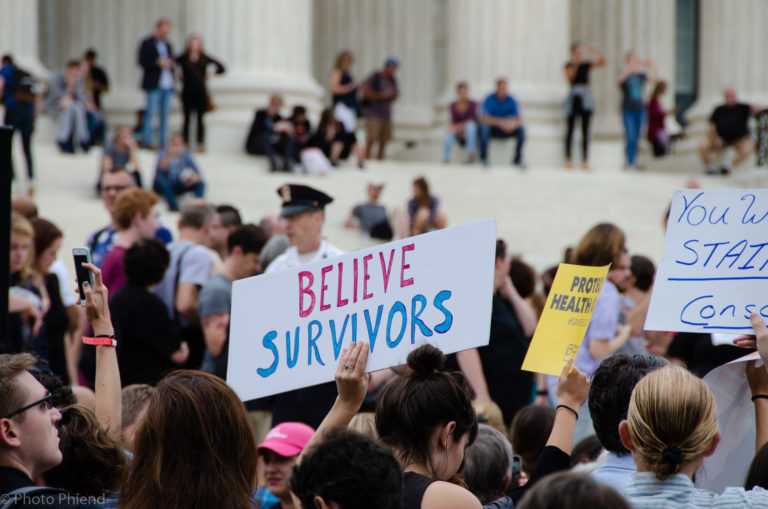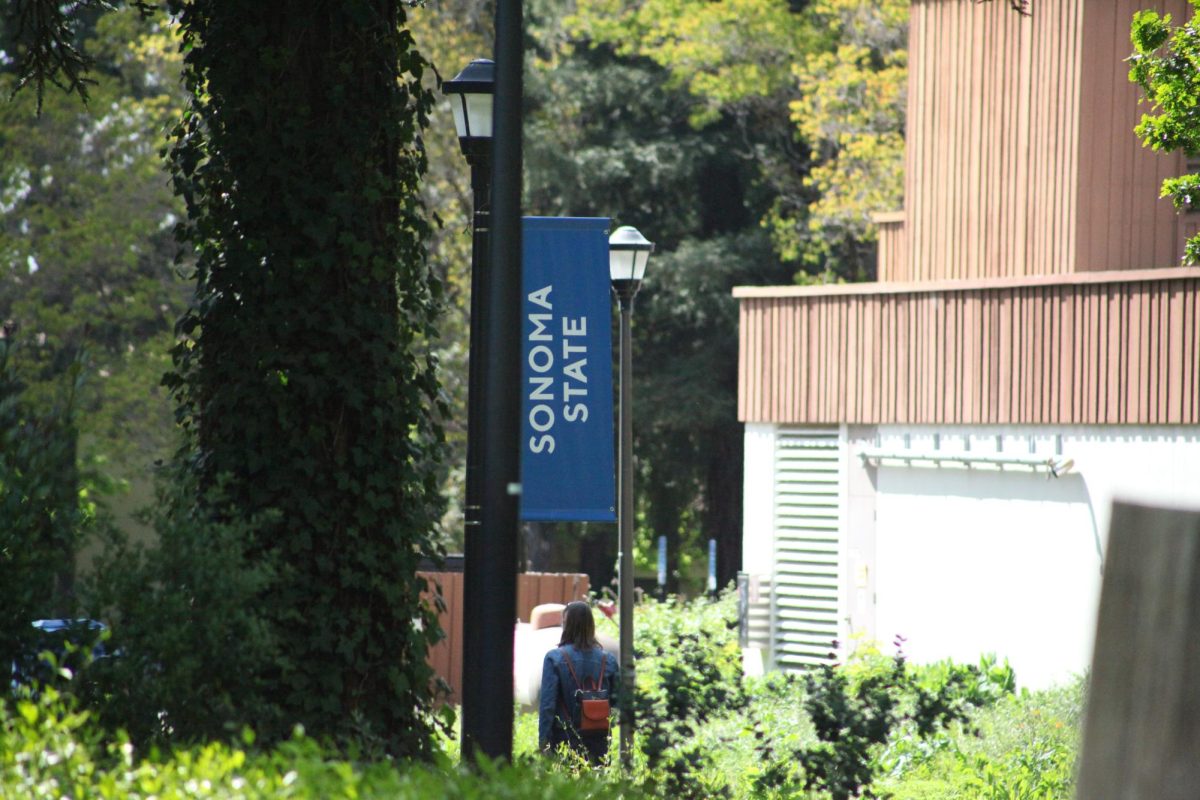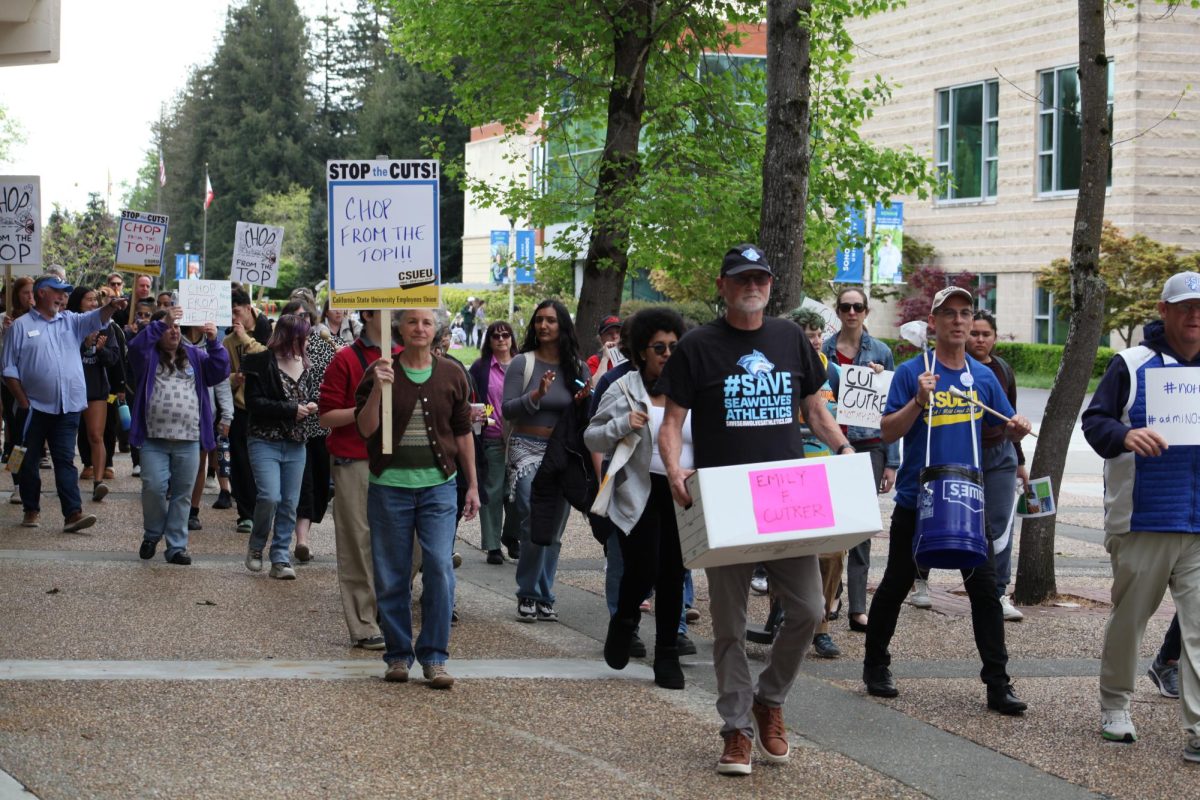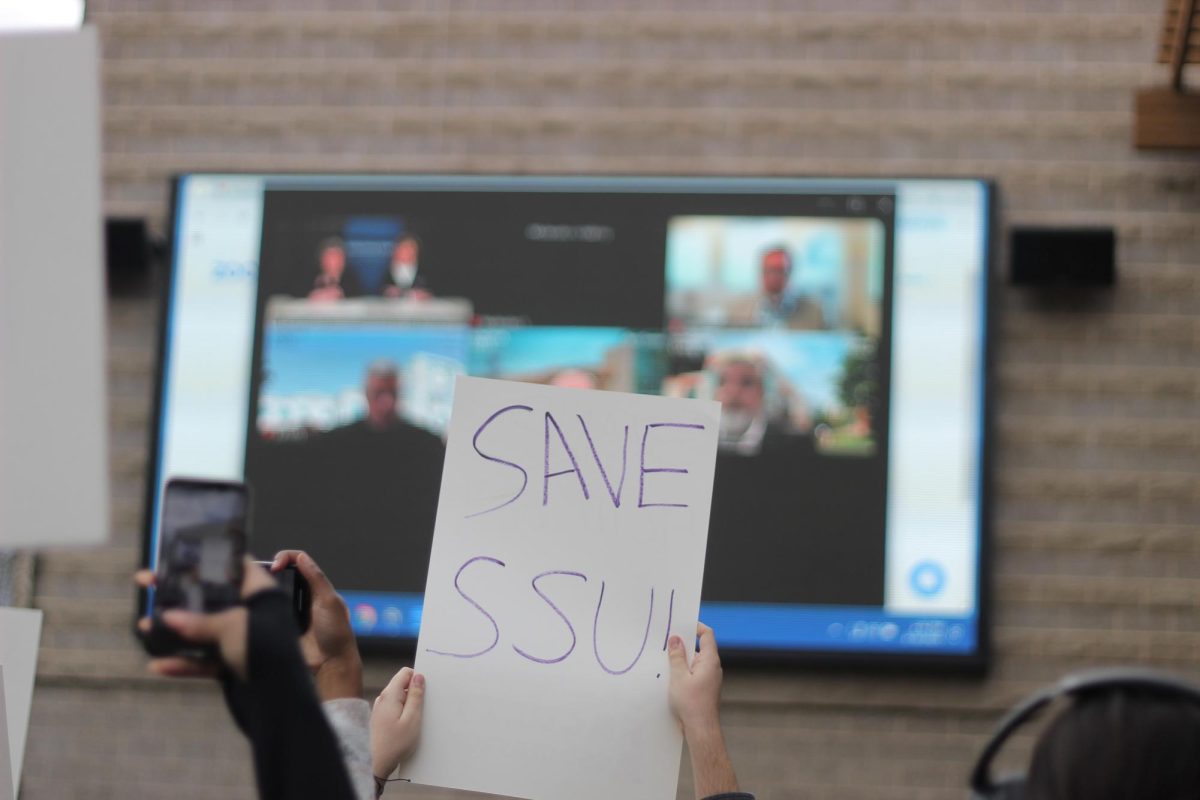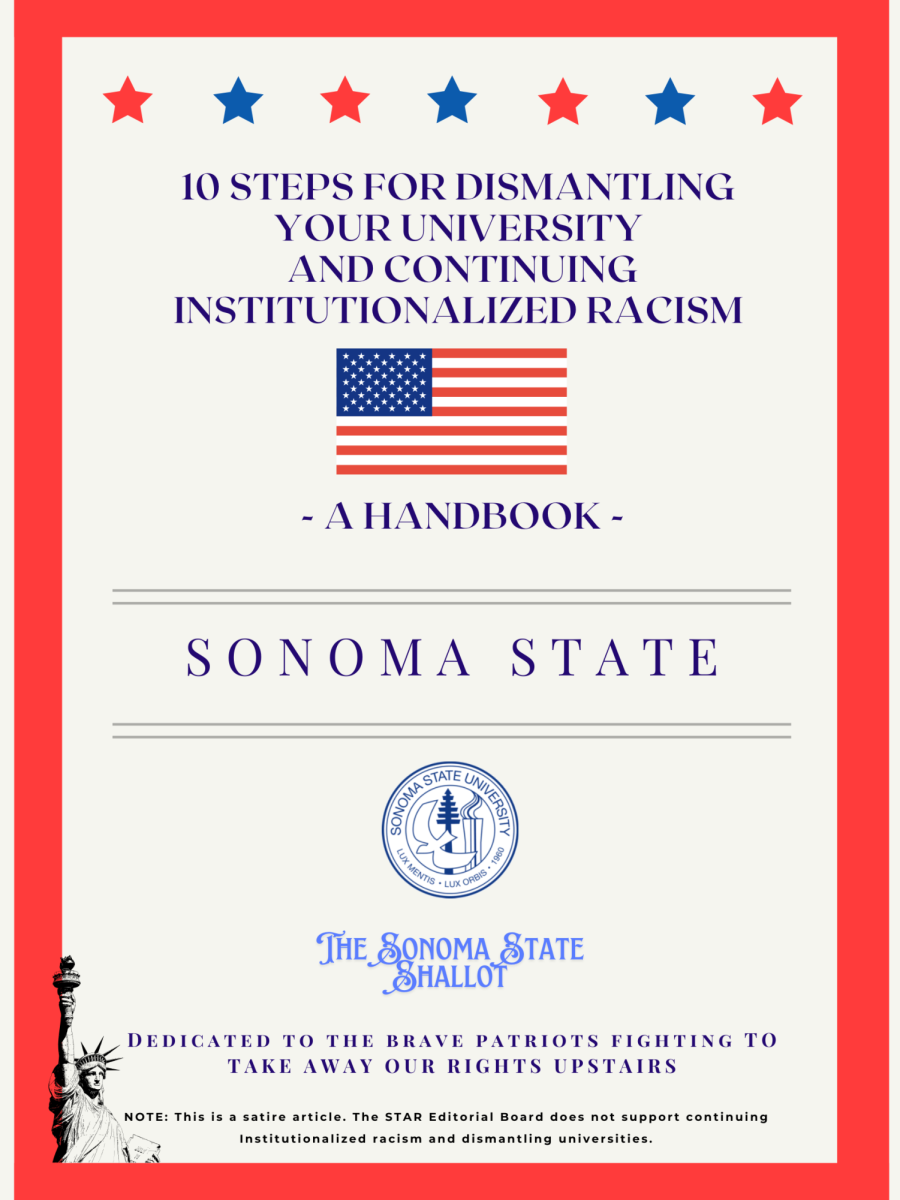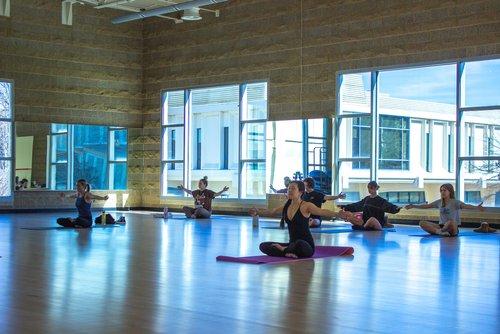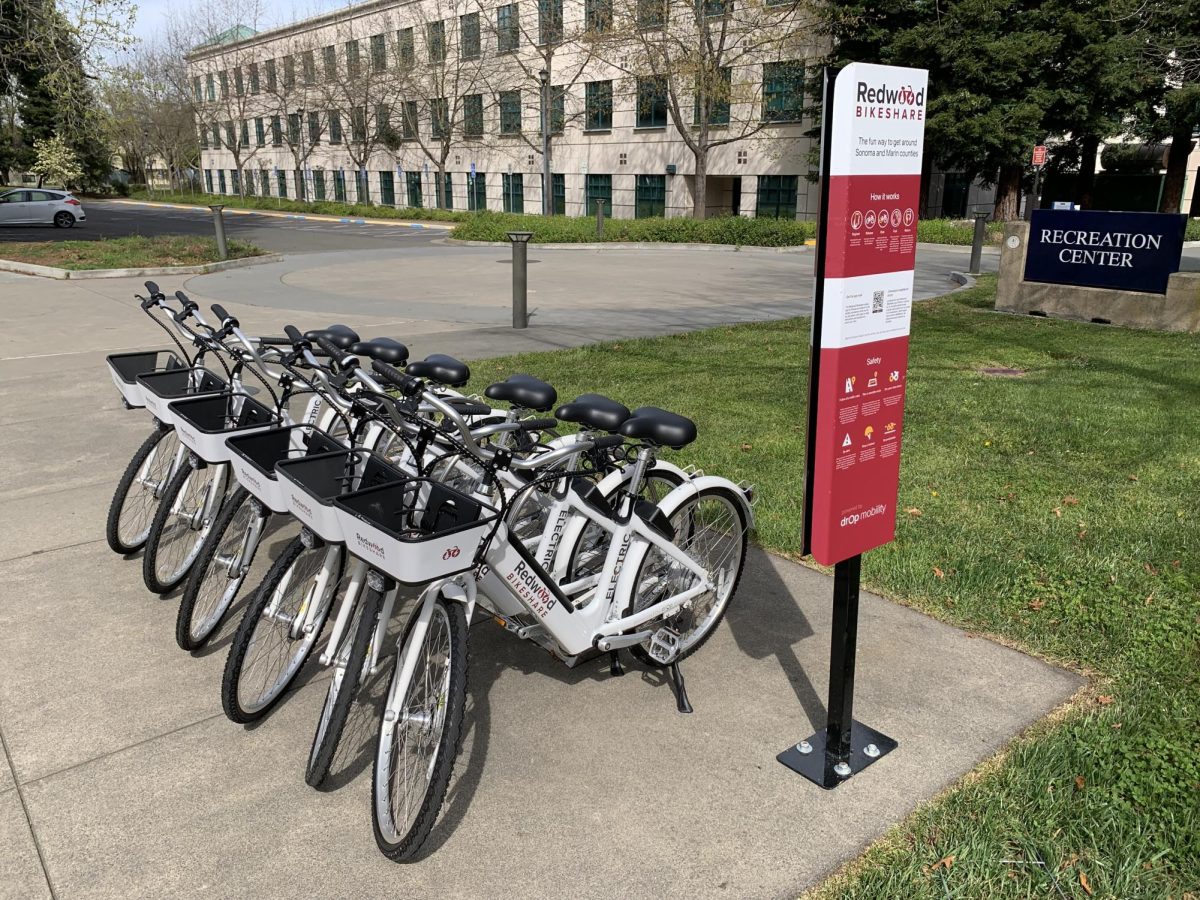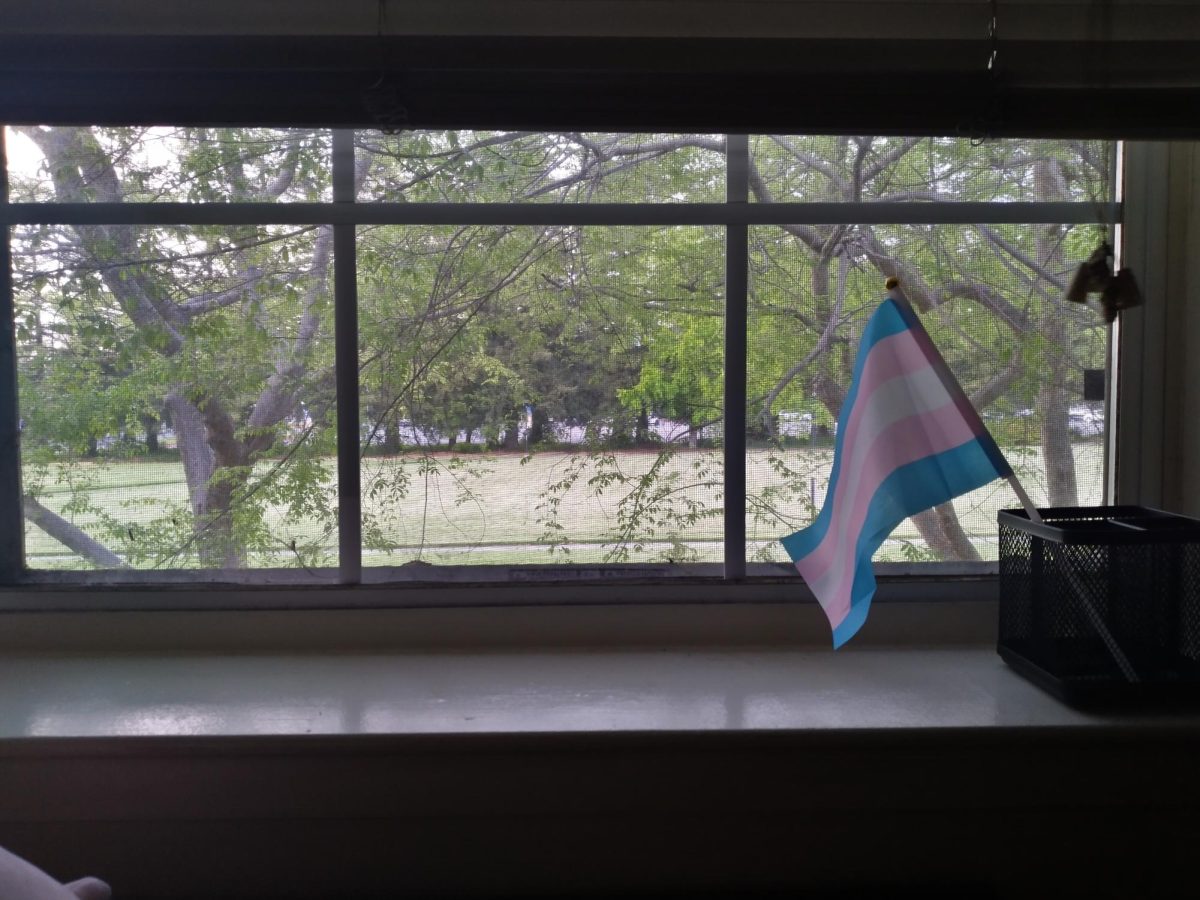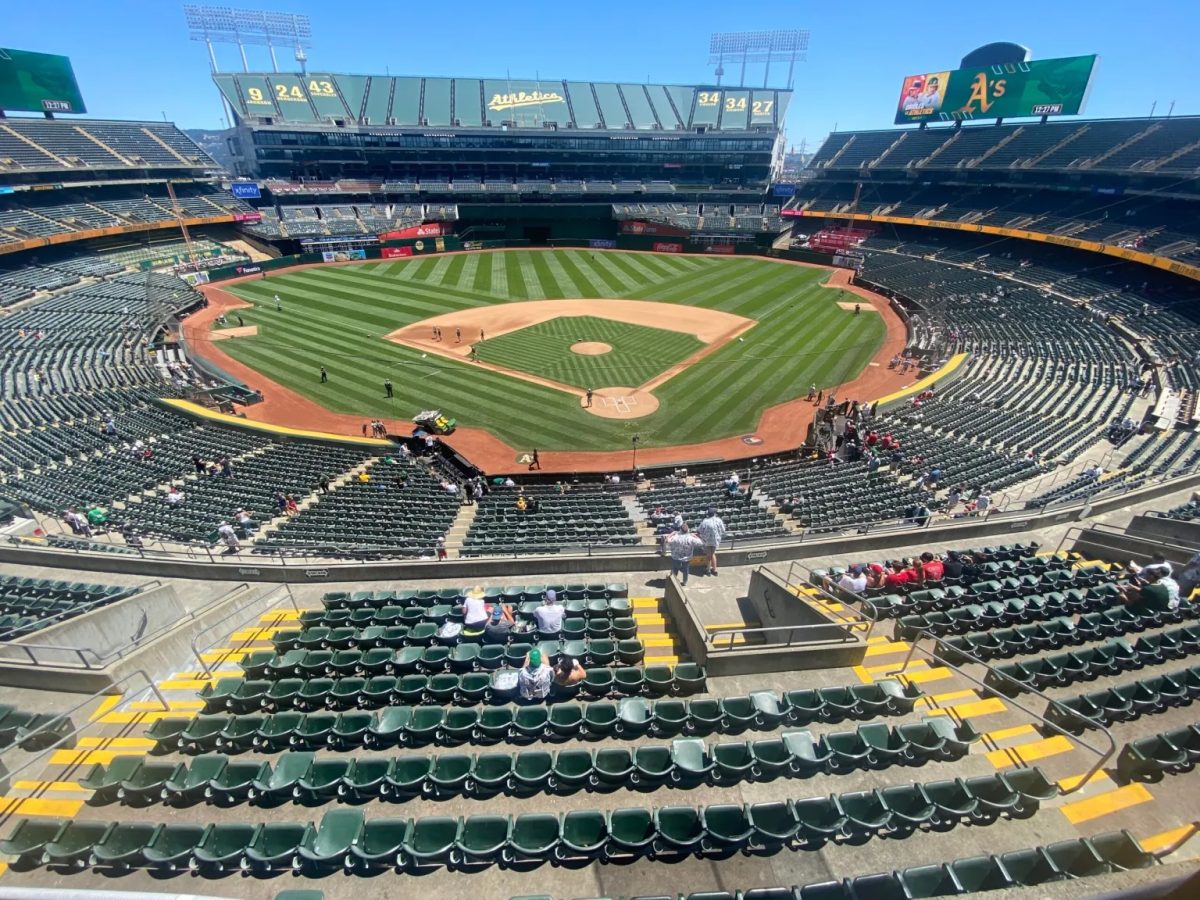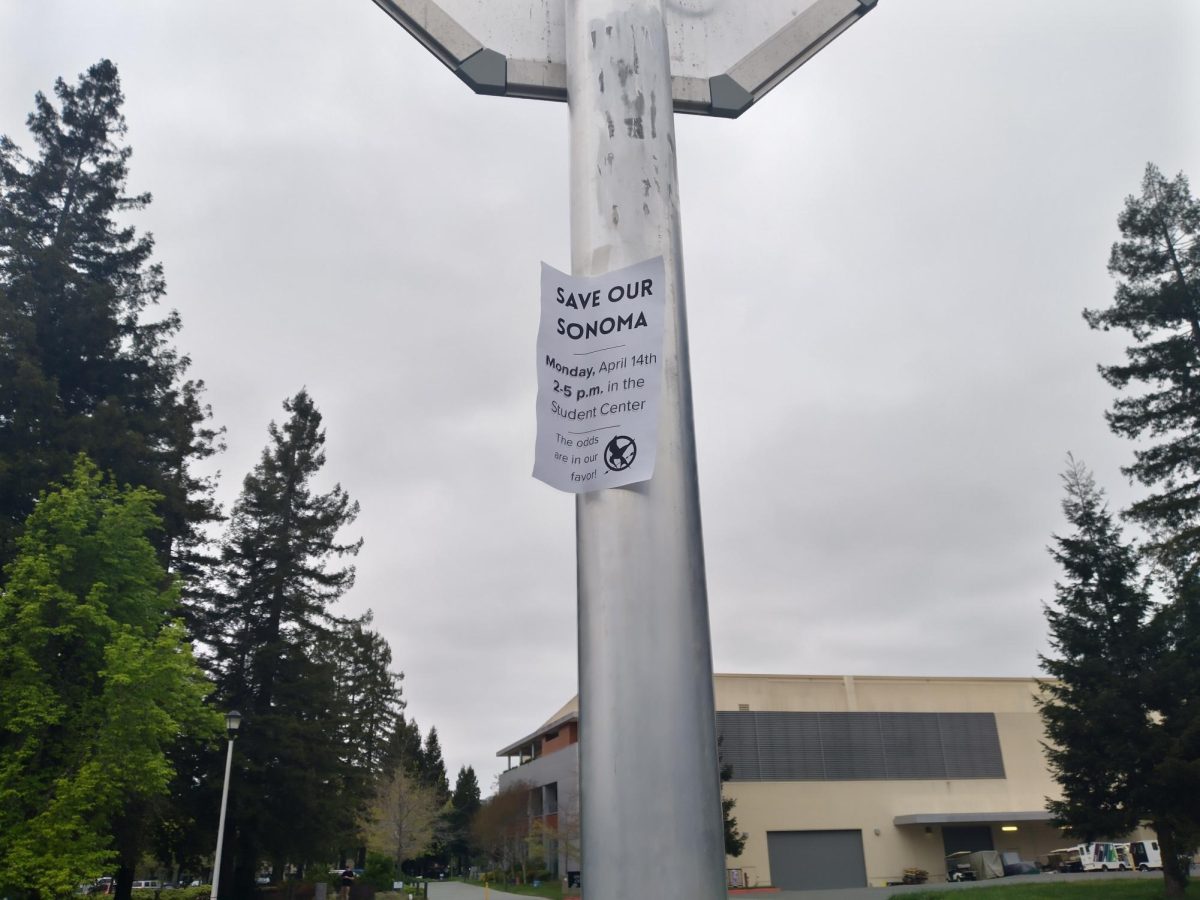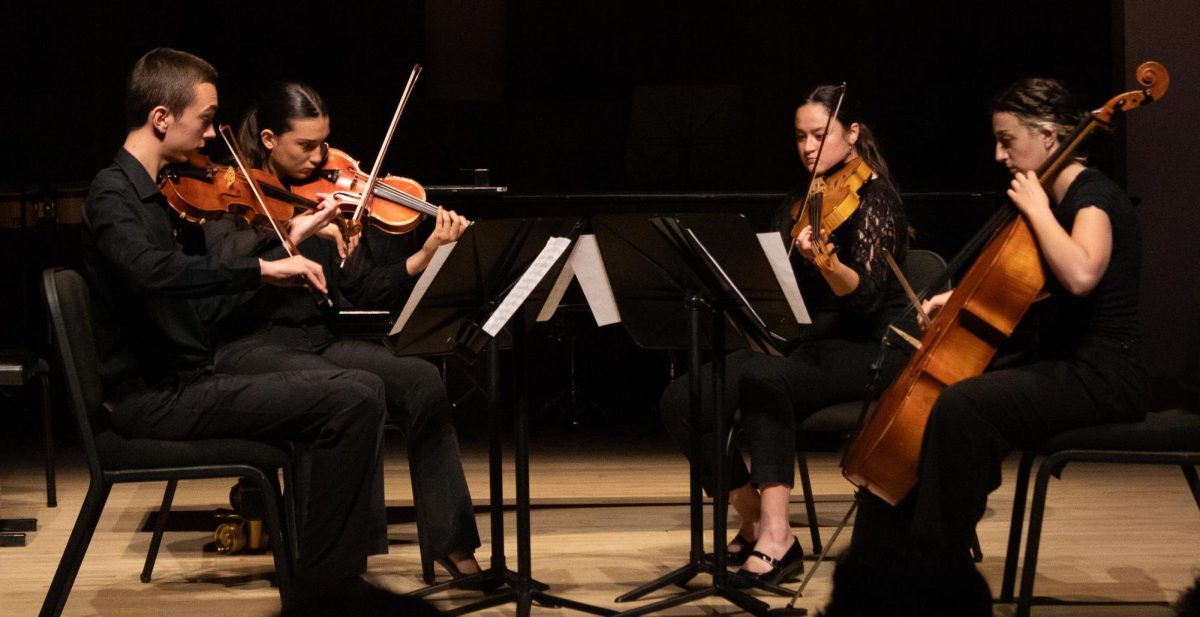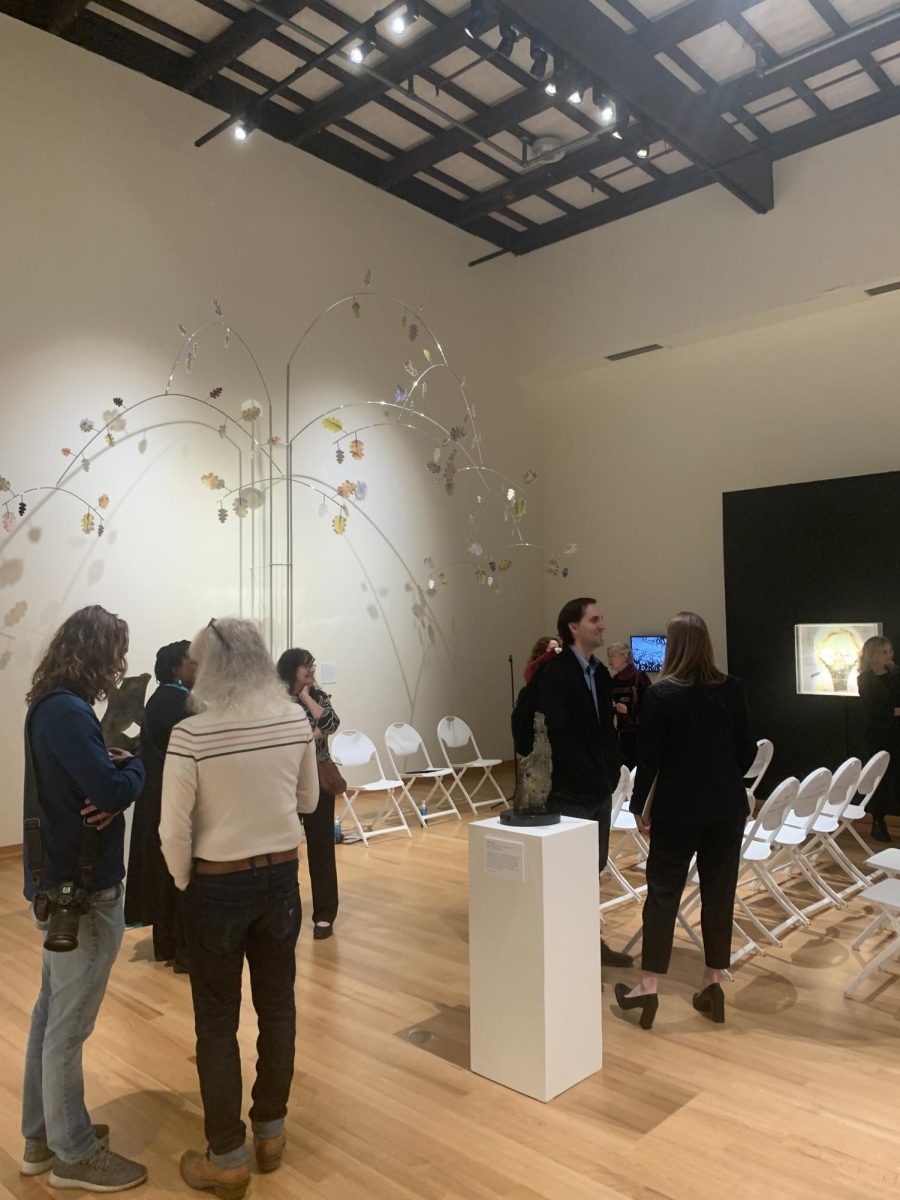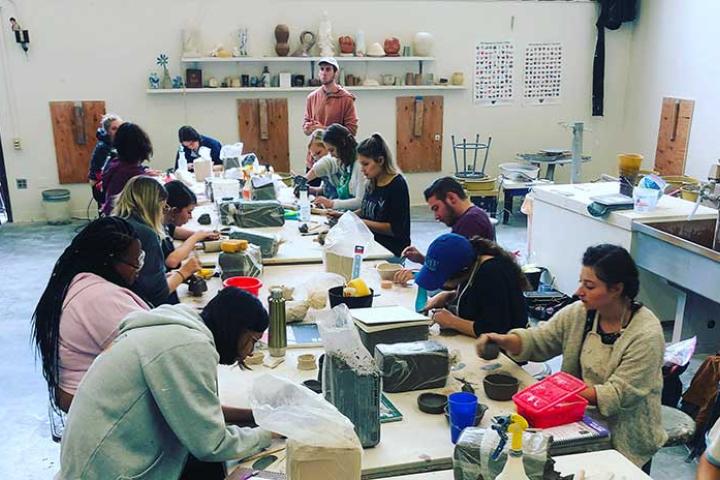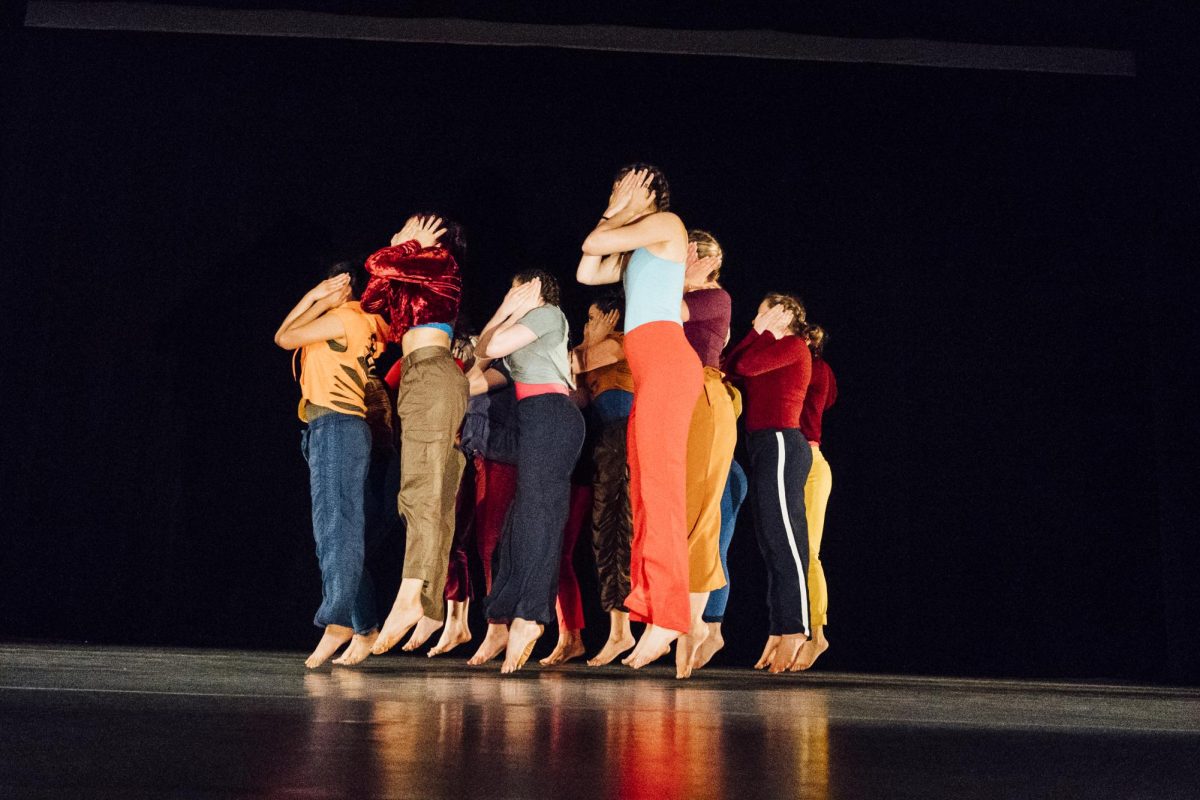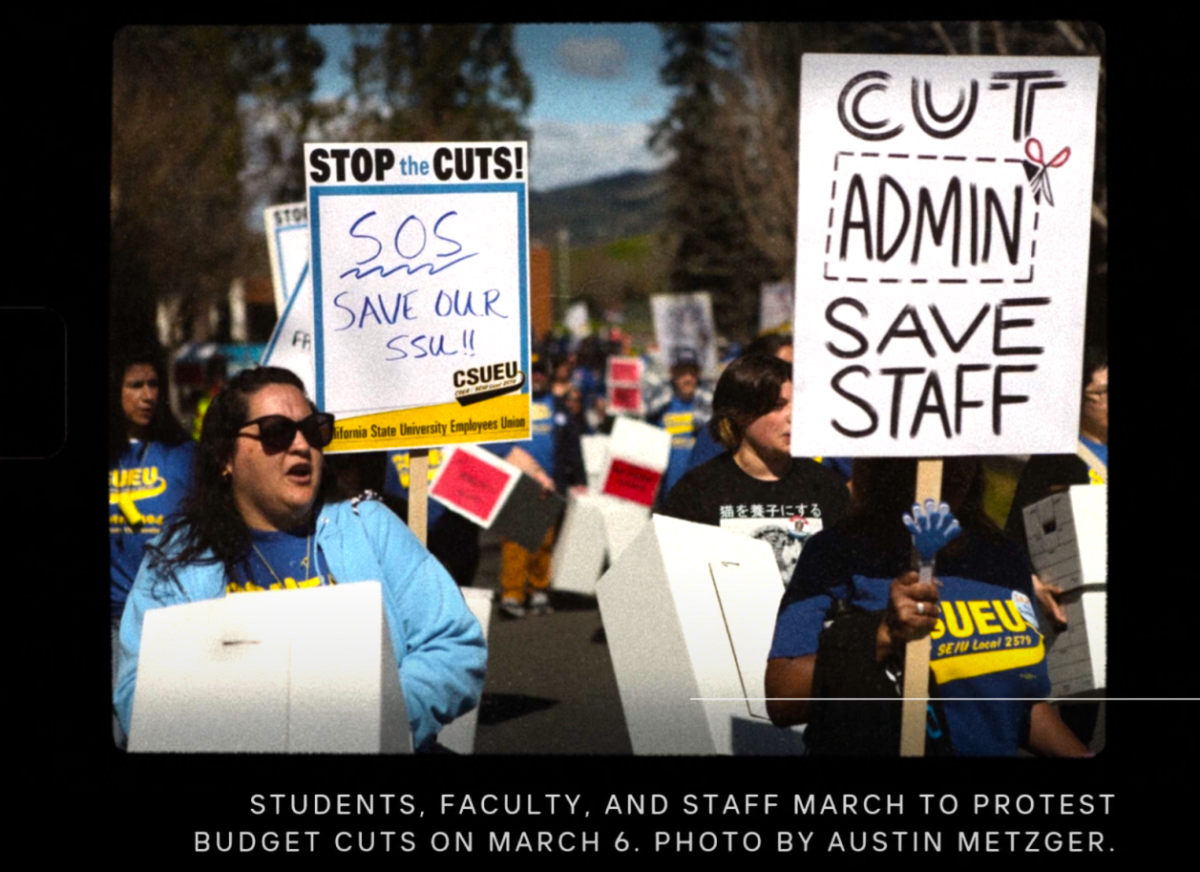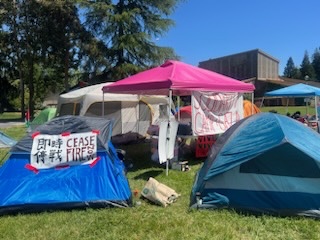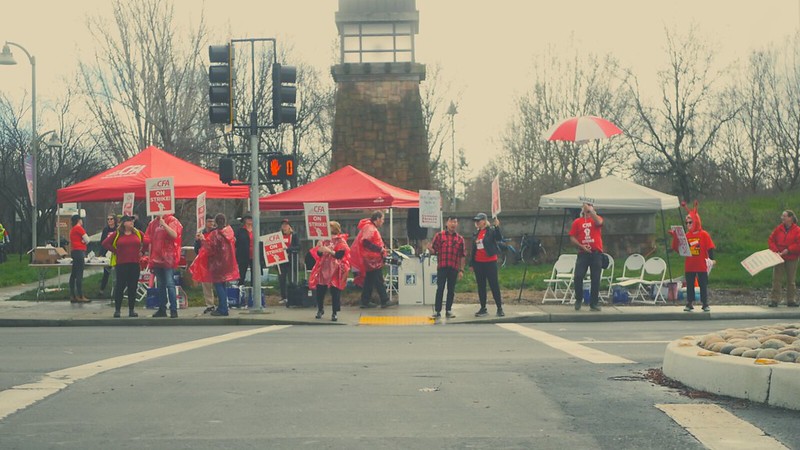Columnist Diana Arroyo
Students and faculty should be able to feel comfortable everywhere on our school campus, especially the lecture halls.
Stevenson Hall, one of the oldest and biggest buildings on campus, has been identified to contain asbestos, a set of dangerous fibrous minerals which was used in the construction of buildings before the 1980’s. Even with the released, not much has been done about this.
Not to mention, many students are not aware of this potential danger they’re exposed to when they have class in Stevenson hall.
Thomas Sargent, an environmental health and safety specialist and a former employee of Sonoma State University, had discovered suspicious powder coming from the roof of the main P.E. building in 2012.
After allegations of mishandling the cleaning of the powder were made to the administration, he alleged in the lawsuit that he was threatened to have his Certified Asbestos Consultant credential taken away for causing an argument. Sonoma State’s Board of Trustees defendant, Dawson, allegedly ignored the warnings of asbestos.
By 2013, according to the lawsuit Sargent had tested a windowsill in Stevenson Hall which contained over 34,000 asbestos structures itself.
Soon later, test results received mid-2015 confirmed the presence of these same fibers in the ventilation system in Stevenson, indicating that all employees working in the affected faculty offices had breathed in asbestos fibers for years.
Dawson, who allegedly suppressed Sargent’s concerns, appears to have dismissed nearly everything in Sargent’s research.
After recent testings done by Sonoma State University Administration, no existing asbestos samples were found.
Faculty were immediately angered about this, saying the university was looking in the wrong places.
Once tested in other places by the firm called Millennium Environmental, confirming there was a high level of asbestos.
Why would the school want to hide this? Who knows. But for whatever reason, it’s not a good thing to keep this from students and faculty at their risk of getting a disease.
Darwin Hall was also known to have asbestos, yet it was completely refurbished. Why wasn’t Stevenson as well?
Professors say they barely go into their own office because of the fear of breathing in the asbestos, which could potentially cause diseases such as cancer. Instead, they hold their office hours elsewhere.
How has this been going on for years without gaining attention? The school should want the absolute best for their faculty no matter what.
An unpleasant workplace will only serve for trouble.
A similar situation occurred at the University of California, Davis, in one of their oldest buildings, Wellman Hall that stood for 46 years.
The incident occurred when a few of the employees were required to install and remove video and audio equipment around campus, and had to drill holes around the building, even though their bosses knew there could have been asbestos in the walls.
The result found a large amount of asbestos and as the drilling occurred it only made it worse, exposing and producing contaminated air to the workers and students.
“I took it home with me on my clothes. I could have exposed my children too,” said Trevor Williams, one of the employees.
It has been said that even a simple disruption, such as simply rolling a chair on contaminated tile, can occur very easily and cause the creation of contaminated dust.
What if tomorrow there’s a powerful earthquake, strong enough to disrupt the asbestos in the building? Then what? The air all around Stevenson could cause unhealthy and unpleasant results.
Faculty should be evacuated from the hall. Stevenson Hall should be completely asbestos free or no one should be allowed inside.
Sealing up a dangerous mess is not a solution. It’s just covering it up. Action needs to happen now before it gets out of control. The word needs to spread as well.
The university’s funds need to be used for instances like this, where the health of students and faculty is threatened.
For right now, it’s not a safe place on campus.

